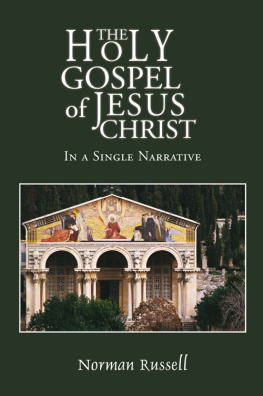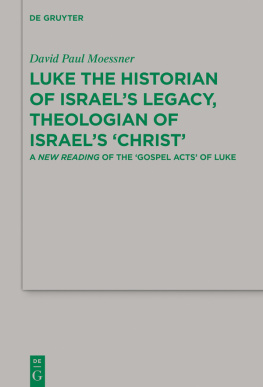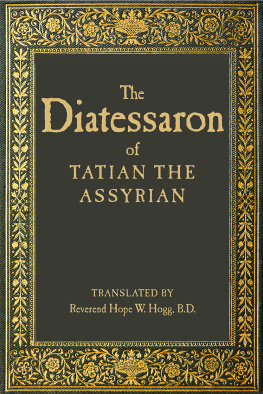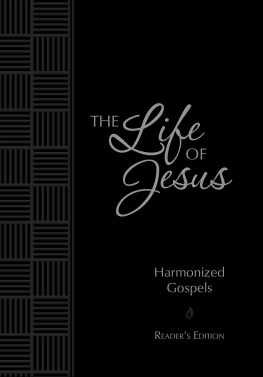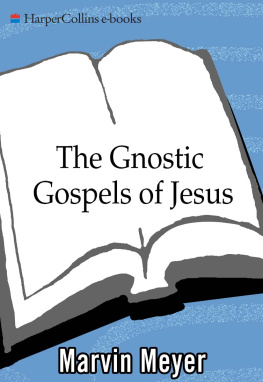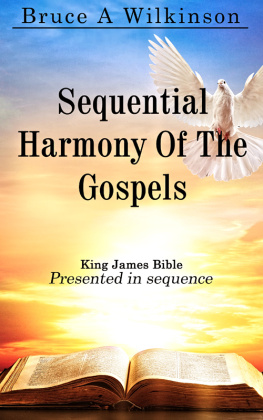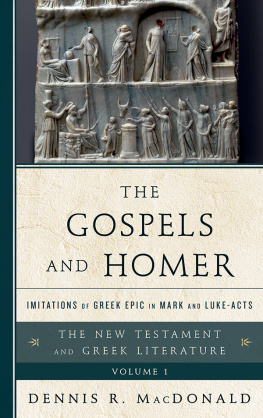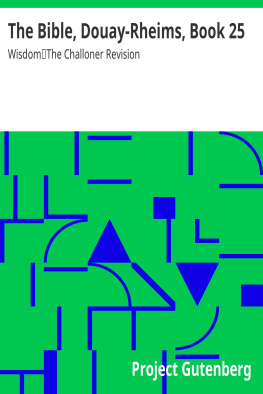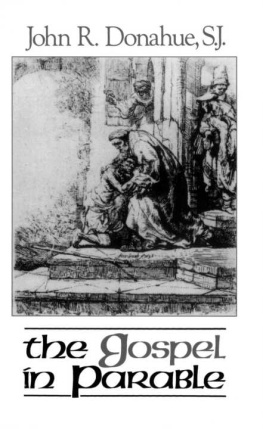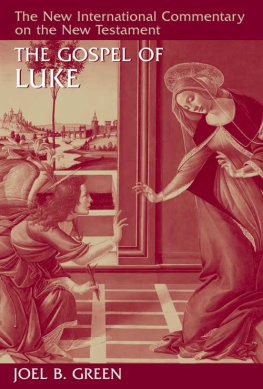
Contents
The numbers refer to the sections of the Narrative
Acknowledgements
The schema which I have adopted in compiling this Narrative was that composed by the distinguished Presbyterian Biblical scholar Dr Loraine Boettner, and used in his A Harmony of the Gospels, printed in 1933, and published by P&R Publishing Co. Phillipsburg, New Jersey USA (web address: www.prpbooks.com) I have seen several different harmonies, but in my judgment Boettners is the most accessible.
Cover picture: The Gethsemane Church, Mount of Olives, Jerusalem. Reproduced by kind permission of Terra Galleria Photography, San Jose, California, USA
_________
Preface
This book presents the whole Gospel of Jesus Christ in a single continuous narrative, compiled from the gospels of Matthew, Mark, Luke and John, and some relevant material from The Acts of the Apostles and the First Letter of St Paul to the Corinthians. Nothing is repeated, unless for a specific reason, and, more importantly, nothing is omitted.
The Narrative is divided into 131 sections, which are listed and described in the Contents. At the head of each section will be seen the principal source, printed in italics, and bracketed. Material from other sources is inserted into the main text in square brackets, and referenced in a footnote. Occasionally, other material is presented in a different way, to preserve the clarity of the narrative. Where some words have been added to the biblical texts to preserve the syntax, they are shown in italics .
This Narrative uses the text of the Roman Catholic Douay-Rheims Bible, which, like the Authorized Version, uses a dignified and measured prose style; non-Catholic readers might be pleasantly surprised to encounter this well-loved version of the Scripture for the first time. There are several editions of the Douay-Rheims Bible, which is a translation of the Latin Vulgate text of St Jerome, who produced it at the end of the fourth century. The English translation of the New Testament was published by recusant Catholic scholars in 1582; the Old Testament followed in 1599. The whole Bible was revised in a more natural English style by Bishop Richard Challoner between 1749 and 1752; it is Challoners version that was used to compile this Narrative. Many of his footnotes are reproduced and acknowledged in my version. I have also consulted the version of the Douay-Rheims Bible issued by Father G.L. Haydock in 1811. Some of the notes to passages in the text are taken from the footnotes in various volumes of the Navarre Bible, an annotated version of the Revised Standard Version of the Bible, Catholic Edition, produced under the aegis of the Personal Prelature Opus Dei .
I have supplied some hundreds of footnotes, mostly scriptural references to the inserted portions of text, but also some explanatory notes on difficult passages, and the meaning of some ancient Hebrew and Aramaic words.
The Authorized Version of the Bible, promulgated by the Church of England under the patronage of King James the First in 1611, is a national literary and spiritual treasure, and from time to time I compare the Douay-Rheims translations with those of the Authorized Version, leaving the reader to decide which is the more enlightening!
It is my hope that readers will enjoy and profit from a single narrative of the Gospel story, both as an aid to study and reflection, and as a reminder of the many saving gifts bestowed upon us by Christ our Saviour, not least the gift of His boundless grace.
NR
Feast of Our Lady of the Most Holy Rosary,
October 7, 2014
Prologue
Jesus Christ Is The Word Of God Made Flesh
(John 1 vv. 1-18:)
I N the beginning was the Word, and the Word was with God, and the Word was God. (2) The same was in the beginning with God. (3) All things were made by him: and without him was made nothing that was made. (4) In him was life, and the life was the light of men. (5) And the light shineth in darkness, and the darkness did not comprehend it.
(6) There was a man sent from God, whose name was John. (7) This man came for a witness, to give testimony of the light, that all men might believe through him. (8) He was not the light, but was to give testimony of the light. (9) That was the true light, which enlighteneth every man that cometh into this world.
(10) He and his own received him not. (12) But as many as received him, he gave them power to be made the sons of God, to them that believe in his name. (13) Who are born, not of blood, nor of the will of the flesh, nor of the will of man, but of God.
(14) And the Word was made flesh, and dwelt among us, (and we saw his glory, the glory as it were of the only begotten of the Father,) full of grace and truth.

(15) John

Notes
The Word may be seen as Gods consciousness of Himself, and so was with Him from the beginning. This Word, which created all things, was made flesh in the person of Jesus Christ, the Son of God.
i.e. Jesus. John the Baptist discerned who Jesus was. His recognition was the ultimate crowning of all those Messianic prophecies found in the Old Testament.
his own The Jewish people; but it may also mean the whole of mankind.
i.e. John the Baptist.
See John 14, v. 11 : [Jesus said:] I am in the Father, and the Father in me.
The Birth of John the Baptist Foretold
(Luke 1, 1-25:)
F ORASMUCH as many have taken in hand to set forth in order a narration of the things that have been accomplished among us; (2) According as they have delivered them unto us, who from the beginning were eyewitnesses and ministers of the word: (3) It seemed good to me also, having diligently attained to all things from the beginning, to write to thee in order, most excellent Theophilus, (4) That thou mayest know the verity of these words in which thou hast been instructed.

(5) There was in the days of Herod, the king of Judea, a certain priest named Zachary, of the course of Abia; and his wife was of the daughters of Aaron, and her name Elizabeth. (6) And they were both just before God, walking in all the commandments and justifications of the Lord without blame. (7) And they had no son, for that Elizabeth was barren, and they were both well advanced in years. (8) And it came to pass, when he executed the priestly function in the order of his course before God, (9) According to the custom of the priestly office, it was his lot to offer incense, going into the temple of the Lord. (10) And all the multitude of the people was praying without, at the hour of the incense.

(11) And there appeared to him an angel of the Lord, standing on the right side of the altar of incense. (12) And Zachary seeing him, was troubled, and fear fell upon him. (13) But the angel said to him, Fear not, Zachary, for thy prayer is heard, and thy wife Elizabeth shall bear thee a son, and thou shalt call his name John: (14) And thou shalt have joy and gladness, and many shall rejoice in his nativity. (15) For he shall be great before the Lord; and shall drink no wine nor strong drink: and he shall be filled with the Holy Ghost, even from his mothers womb. (16) And he shall convert many of the children of Israel to the Lord their God. (17) And he shall go before him in the spirit and power of Elias; that he may turn the hearts of the fathers unto the children, and the incredulous to the wisdom of the just, to prepare unto the Lord a perfect people.
Next page
